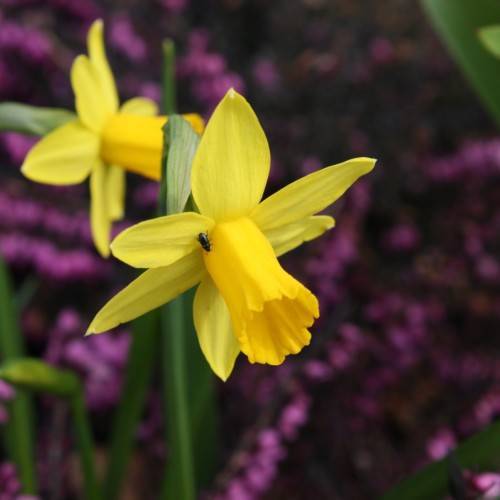
cyclamineus daffodil
Narcissus 'Stony Brook'
Cycle:
Perennial
Watering:
Average
Hardiness Zone:
3 - 8
Flowers:
Flowers
Sun:
Full sun,part shade
Leaf:
Yes
Growth Rate:
Low
Maintenance:
Low
watering
Narcissus 'Stony Brook' should be watered on a regular basis, but slightly less frequently than other plant species. When first planted, water until the soil is evenly moist, but not saturated. Once the plant is established in its pot or garden bed, water Cyclamineus Daffodil about once a week, allowing the soil to become slightly dry between waterings. The soil should never become bone dry or overly wet. Water in the morning to reduce the chances of rust and rot, and avoid wetting the foliage, which can lead to fungal diseases. During the summer, extra water may be needed during prolonged periods of drought.
sunlight
Cyclamineus daffodil (Narcissus 'Stony Brook') thrives best in full sunlight for 6 or more hours per day, preferably in the morning. While this species of Daffodil can tolerate partial shade, flowering production will likely be reduced. To ensure a burst of bright-colored blooms in springtime, this flowering plant should receive as much direct sunlight as possible throughout the entire growing season.
pruning
For the species Cyclamineus Daffodil (Narcissus ‘Stony Brook’), pruning should be done shortly after the flowers finish blooming. Pruning should involve cutting the foliage down to the base and removing the seed heads. This will ensure that nutrients and energy do not get wasted producing a seed.Prune lightly and avoid cutting through green leaves if possible. Pruning too much will reduce the amount of foliage and flowers for the next season. In addition, be sure to remove any stems that are diseased.
